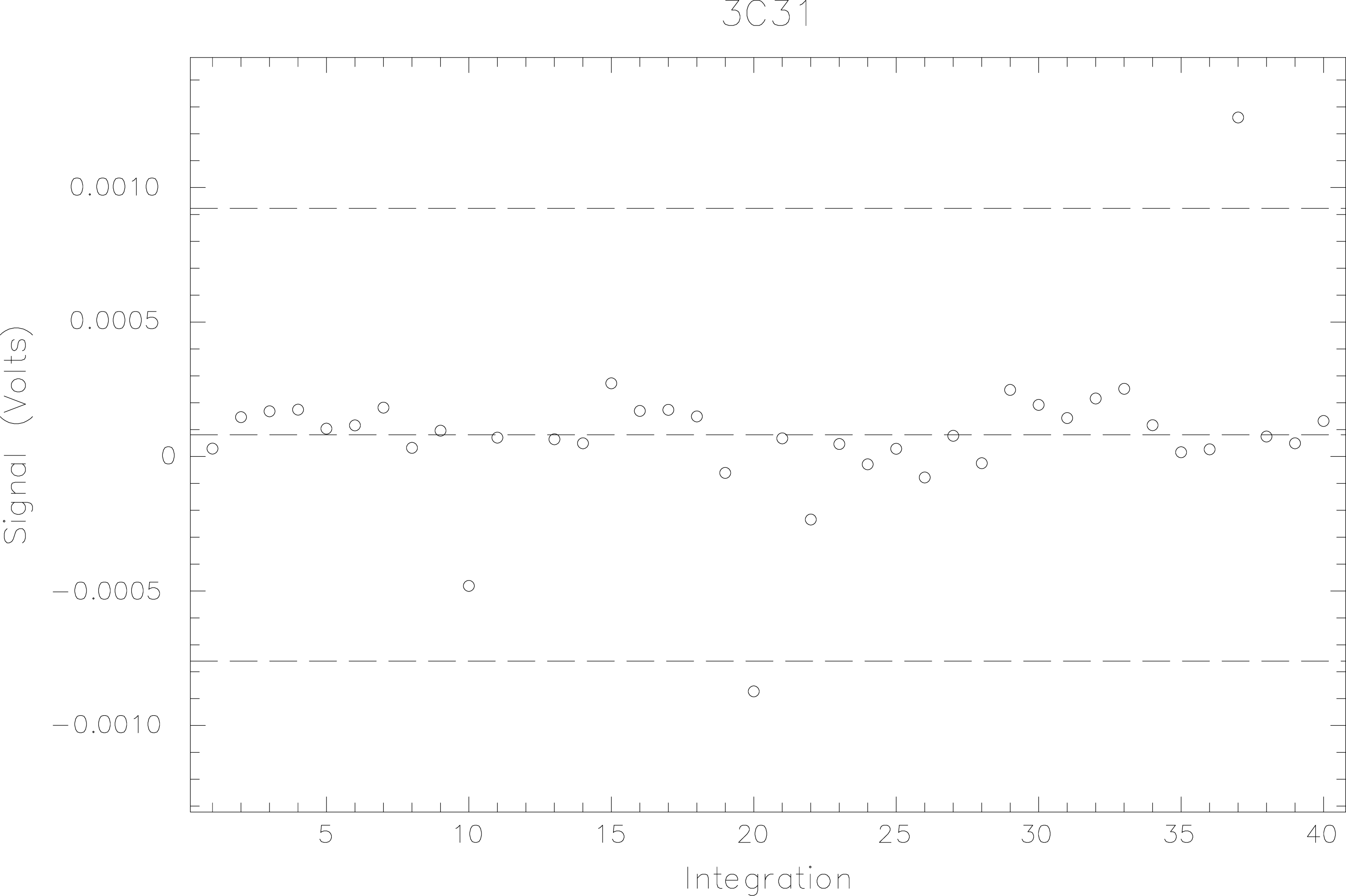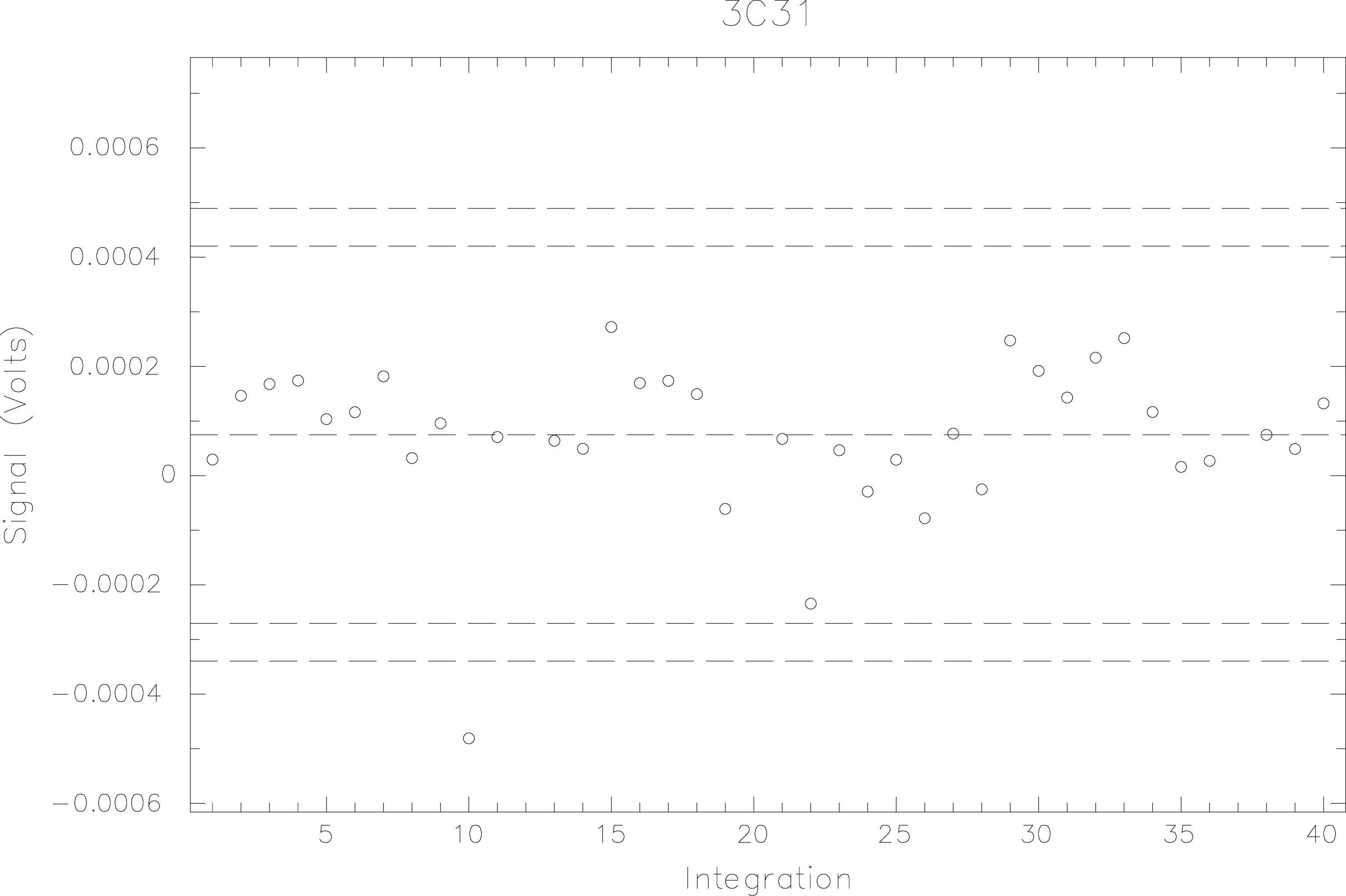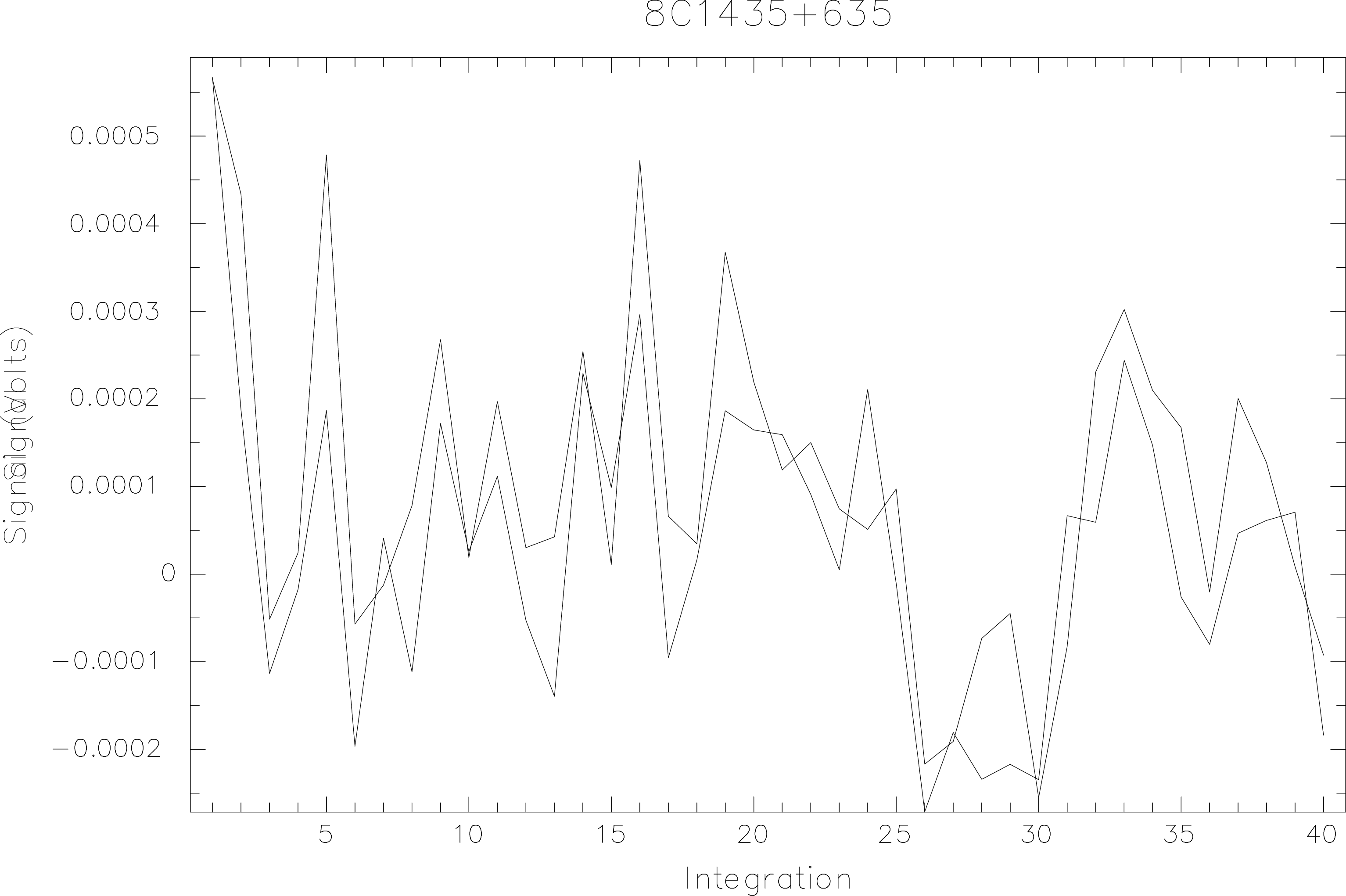
The following two sections show sample reductions of real photometric data, first by the long winded
method of typing each of the Surf commands in turn and then using the perl [6] script
scuquick which provides some level of automation.
For the first example, I’ll use two 20 integration observations of the radio galaxy 3C 31 which were made at 2.0 mm during the astronomical commissioning on a poor night (the zenith optical depth at 225 GHz was about 0.1). I’ll use change_flat to change the flatfield file although, since we are using one of the photometric pixels, flatfielding is not necessary.
The first observation is #70:
The ASCII file, red70_phot.dat, contains the following:

The same procedure is repeated (not shown here) for #71 to produce the file red71phot.sdf. We can
then combine the two observations using scucat:
We are now in a position to plot and despike the data (see Figure 1). Note that the bolometer name, g6,
will be appended to the file name giving 3C31_2000_g6.sdf.
Clearly, this data set contains large spikes and the best despiking strategy is to remove the two biggest spikes that fall outside the 3σ levels and then replot the data. For this we use the sigclip command.

sigclip. The third spike is now excluded with a
3σ
clip and there are no further spikes at the 2.5σ
level.All three obvious spikes have now been removed and there are no further spikes down to the 2.5-σ level (see Figure 2). The source is detected at the 5.3-σ level.
scuquickThe PERL script scuquick can be used to save time by automating the reduction process up to and including the scuphot stage. Note that if many repetitive operations are to be performed then scuquick (or any other Surf command) will take options. For example,
will invoke the remsky command at the appropriate position in the reduction process. A list of avialable options can be accessed by typing
The second example uses scuquick to reduce a long integration on the radio galaxy 8C1435+635 at 450
and 850μm.
Note that scuquick will reduce data from both arrays unless instructed otherwise by use of the -sub
option.
This data set was obtained under moderately noisy sky conditions so sky removal will be used in an attempt to correct for the sky variations. I’ll just reduce the first demodulated data file here.
and similarly for the rest of the data after which scucat and display/despike procedures can be
followed as before. Note that I took the ‘default’ sky bolometers which correspond to the inner ring of
the long-wave array in this case - in fact these are not strictly the default but rather the last
combination that were used. I recommend reducing the data both with and without sky removal since
under very stable conditions the signal-to-noise can be degraded by removing the sky. A useful aid is
a plot of signals from the source bolometer and sky removal bolometers. There are a variety of ways of
doing this: Appendix A describes how to get ascii output for any bolometer; here I’ll use Surf and
Kappa commands to investigate the effects of the adopted sky removal. Firstly, we can use
scuphot and scucat to write out data for all bolometers in a file - in this case observation
#52 as before. I’ll use the extinction corrected data because these have been processed by
flatfield;
Each bolometer now has a file called, e.g. r52_h7.sdf. The Kappa commands add and cdiv can be
used to get a mean sky value for the inner ring.

and then use linplot to overlay the data (you can use e.g. lincol=red to get coloured plots),
Figure 3 shows the output from linplot which clearly shows that the signal and sky are correlated in this case.